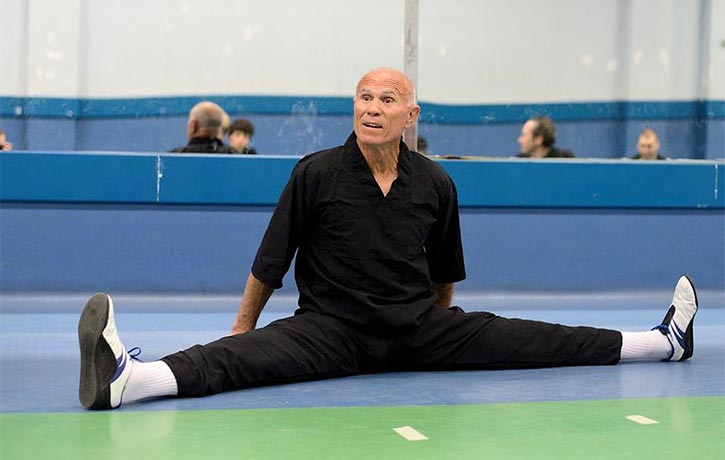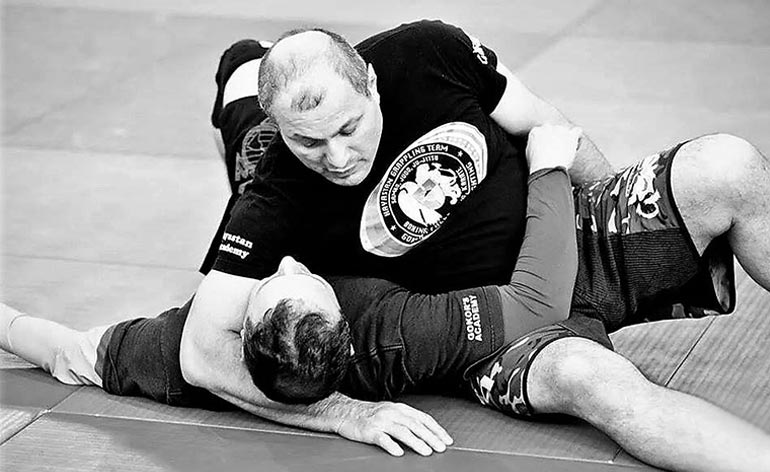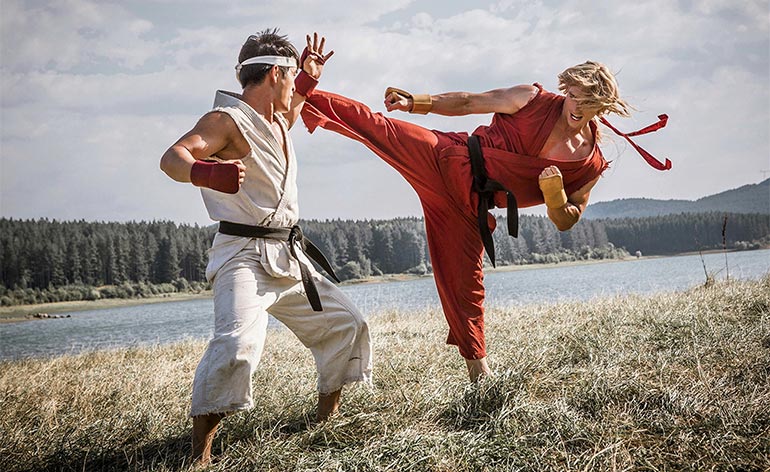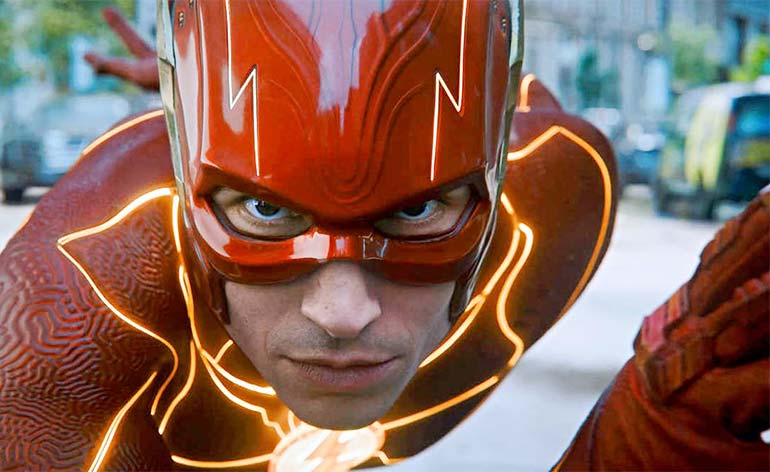
For many people, a crippling knee injury would probably spell the end of the road in the life of a given physical endeavour, for Bill Wallace, however, it just marked the beginning of his. As a novice karate student, Bill’s recovery from a dreadful Judo mishap would force him to learn to kick almost entirely with his left leg, and thus, the legendary “Superfoot” was born.
One of the pioneers in the sport of full-contact kickboxing, Bill retired from the sport undefeated, more than earning his nickname with victories over his opponents coming from his swift, deadly left leg – a formidable tool of combat that has been clocked in excess of sixty miles per hour!
Today, Bill sits down with KFK to share his stories as one of the world’s earliest kickboxing champions, his adventures showcasing his kicking skills on the big screen alongside the likes of Chuck Norris and Jackie Chan, and his career today passing on his wisdom in the art of full-contact fighting in kickboxing seminars across the globe!
Hi Bill, we’re so grateful that you’ve taken some time out for us today. Hope you’re doing well?
Hi Brad, I’m doing great, thanks. Glad to be here!
Superb! Well, let’s kick off with some basics, like when and where you were born?
I was born in Portland, Indiana (USA) on December 1st, 1945.

Bill’s got great flexibility
Your height and weight?
I’m about 5’9” (1.75m) and weigh 165lbs (75 kg).
Okay, so let’s talk about your beginnings in martial arts. How old were you when you started? What different disciplines have you studied?
I first started with wrestling when I was twelve years-old and I did that until I joined the military in 1963. That was when I first got started in Judo on the Army’s Judo team. I kept up with Judo until I had my knee injury, then I got involved with Shorin-ryu Karate.
So, who would you credit as having most influenced you in the martial arts?
My good friend Glenn Keeney was the most influential for me. We used to travel and compete all over the country together all the time. I’d also have to say my good friends, Chuck Norris and Joe Lewis and Lewis “Skipper” Mullins, as well.
Yes, Joe was extremely tough and a great fighter, RIP. Moving forward now, what can you tell us about how you first began your career as a professional kickboxer? What are some vital skills martial artists should have if they want to go into full contact fighting?
I started kickboxing in 1974. At the time, I was happy with just point-fighting, but all my friends really encouraged me to step into ‘full-contact karate’, as it was called then. I never set out to be a hard fighter, I was all about being quick and hitting you without getting hit. You definitely have to have speed as a skillset and you also need a certain set of combinations that you’re really proficient at. You need to have both speed techniques and power techniques. Most of my techniques were speed-based, and my power techniques were my sidekick and my left hook. For full-contact fighting, you need to be knowledgeable on how to implement speed and power techniques in different situations with your opponent.
Absolutely. So, over the course of your kickboxing career, you fought and won twenty-three fights. Out of all of the opponents you faced in your professional career, who would you categorize as the toughest or the one who gave you the best fight?
Every one of them! (laughs) Because I was champion at the time, everyone was trying to knock me out, so I constantly had to be prepared for everybody I faced in the ring.
Winning strategy! On that note, you’re well known for kicking primarily with your left leg because of your Judo injury. What can you share about how you worked around the injury and how it influenced your kicking style?
I was practicing for a Judo tournament, and another guy in the Judo club fell on my right knee and tore the ligament, so that basically ended my Judo career. In fact, when I started Karate, I had a cast on my right leg, so my teacher told me, “Just kick with your left leg”, and I couldn’t pivot or move forward on my right leg, so I basically just stood on that leg and threw sidekicks and roundhouse kicks. That’s also where I got really good with my left hook kick because my sidekick at first was very sloppy trying to kick that way, but I was able to get the sidekick down eventually. It’s a technique I really like because it goes straight from your hip into the opponent. So that’s where my kicking style came from.
Knee injuries are certainly challenging at best. On the topic of injuries, what was the worst injury you ever experienced in your professional career and how did you work around it?
Well, my worst injury in point-fighting was definitely when I lost my left testicle when I got kicked in the groin. Overall, the knee injury was probably my worst injury overall, but it ended up being a blessing in disguise because it made my kicking with my left leg so strong.
Absolutely! how great that you turned tragedy into triumph! Moving ahead now, you also hold the distinction of having been one of Elvis Presley’s karate teachers back in the 70’s. What can you share about the experience of training ‘The King of Pop’?
Elvis was a good guy, and he was fun to workout with. I trained with him at Graceland tons of times. He was one of Ed Parker’s Kenpo students, who I knew and competed with all the time, and he was really good. He didn’t spar too much, because with his career, he just couldn’t take a chance on getting hurt, so we mainly focused on the self-defense side of training. He was definitely a great guy to train with.
I’ll bet, thanks for sharing that. You also served as a commentator, alongside Don “The Dragon” Wilson and Kathy Long, at some of the really early UFC tournaments. How did you first become involved in doing commentary for the UFC during its early days?
Rorion Gracie called me up and asked me to do it because of my kickboxing background, and he also knew I was familiar with a lot of the grappling techniques that his brother Royce would be using because of my Judo and wrestling background, so he thought I’d make a great commentator for the event. There’s been a lot of very, very good fighters who have stepped into The Octagon since then.
Yes, MMA and UFC have certainly come a long way. Looking at your career in another form of show business now, you appeared alongside Chuck Norris in the movie “A Force of One”. What can you share with us about the experience of making the film alongside Chuck?
We did that movie in 1978 when I was at the top of my career, and it was my first movie. He just called me up and asked me to be the villain in the film and I said, “Sure, that sounds like fun.” Chuck’s a great person and a great teacher, and I learned a lot about movie making from him playing the villain in “A Force of One”.
Definitely. You also would later appear alongside another living action legend, Jackie Chan, in “The Protector”. How was that experience making the film alongside Jackie?
That was another really fun experience. We filmed that movie in Hong Kong, and we did two different versions of our fight scene. There was one for the American version of the film that was a knock-down, drag-out fight. Then we did the Chinese version, which had a greater emphasis on the defensive aspect of it. There was one part of the fight where I put a left hook into Jackie’s ribs, and the stunt guys said, “No, that’s not hard enough, you’ve got to make it look hard”, and I didn’t want to. I said, “I’ve got a really mean left hook”, but Jackie wanted me to hit him harder, too, so he put some padding on underneath his jacket, and we went again. I threw the left hook and really nailed him in the ribs. He dropped to the ground as it took the wind right out of him, and I said, “I told you!” (Both laugh)
That’s the main man Chan for you, he’ll put himself through anything! Can you share your thoughts on other legends of martial arts films like Bruce Lee, Jet Li, Tony Jaa, Donnie Yen, Scott Adkins, Michael Jai White etc?
Oh, everything Bruce did was great. “Enter the Dragon” was so fantastic because Bruce was doing things that nobody had ever seen before. Michael Jai White is a superb technician and I’ve done some seminars over in England with Scott Adkins, and he’s a very talented martial artist, as well. I also really love a lot of Phillip Rhee’s work, I used to train with him all the time out in L.A.
Indeed, Phillip’s the real deal! Moving ahead to training now, what can you share with our readers about how Bill Wallace trains. Is it mostly martial arts and flexibility, or do you do weight training, as well? Do you take supplements.
Well, I do seminars every weekend, and I train with friends on Tuesdays and Thursdays during the week. I don’t take any supplements, for me, it’s mostly about doing a lot of repetitions just to maintain. I’m in my seventies now, so I’m mainly just about maintaining my speed and precision. I still stretch every day, too, but again, not too hard, just to maintain. I’m not crazy about the travelling part, but I always have a blast teaching seminars. It’s a great chance to train with different people, see different people’s fighting styles and hear their philosophies, and to just help people build up their skills. Yeah, it’s always a blast doing seminars.
And the feeling is definitely mutual for anyone attending your seminars, I’m sure! Well, on the topic of flexibility, what are some of Bill Wallace’s secrets for developing flexibility?
You have to teach the muscles to relax. You can’t force your muscles to stretch, you just have to take it a little bit at a time so that the muscles learn to relax. That’s how you gain and increase your flexibility.
Yes, muscles have to be taught, not forced. Well, looking at nutrition now, what kind of diet do you follow?
I pretty much each whatever I want. I do eat a lot of fruit, but I’ve been eating hamburgers, French fries and ice cream for decades, and I’m still the same weight I was when I retired in 1980, so there! (Blows a raspberry, both laugh)
You’re one of the lucky ones with a strong metabolism! Moving into fun and leisure now, what’s one geeky thing about you that people don’t know?
I love animals. My wife and I have five dogs and one cat.
Running a kennel in your house! So what are some of your hobbies outside of martial arts?
I used to play golf a lot, although not so much nowadays. I also love cars and just relaxing around the house with my wife and all the animals in our house. It’s nice to be able to just sit down and relax after traveling to teach seminars on the weekends.
Favourite music?
I like oldies from the fifties and sixties. Guys like Elvis, The Beatles, Creedence Clearwater Revival, The Association, The Turtles and Bob Dylan, I love the oldies!
Favourite movies (non-martial arts)?
The oldies again. “The Magnificent Seven” is my favourite movie. I also really like “The Hunt for Red October”, and I like anything that just has some realism in the story, where you feel like the premise is plausible.
So, what are some things in life that you really:
Like?
Blue skies, sunny days, that kind of thing.
Dislike?
I get along with people, but I don’t like the attitude of people as a whole towards the world around us. We kill animals, cut trees down when we don’t need to, etc. That’s probably why I’m such an animal lover.
So, what would you say is your proudest accomplishment so far?
Retiring from professional kickboxing undefeated. I’m very proud of that.
Absolutely. So what are you really keen to accomplish in the next five years?
Just making it to those five years, I’ll settle for that! (Both laugh)
Okay! So what are some warrior-wisdom quotes that have really shaped who you are today?
One thing I always like to say – If we spar, and there’s a chance one of us might get hurt, I’d rather it was you! (Both laugh)
Get them before they get you! Well, as we prepare to sign off here, what special message would you like to give to Kung Fu Kingdom readers and to your students, fans and followers around the world?
The most important thing you can do when you learn martial arts is to enjoy it. Everybody’s built differently, everyone has different strengths, different weaknesses, we’re all different psychologically, and we can all learn from each other. Martial arts is something that you can do forever, so the important thing is to enjoy it.
Well said! So, if people want to find out more about you, where’s the best place to go to?
My website’s the best place Superfoot.com
Outstanding. Thank you so much, it’s been a privilege speaking with a living, kicking martial arts legend such as yourself, Bill!
My pleasure, thanks for having me here on Kung Fu Kingdom!
Want to share your views on this interview with Bill “Superfoot” Wallace and kickboxing? Comment below, join in the conversation on Facebook and follow us on Twitter. We’ve got lots more great martial arts interviews for you too!

























What is the exact name of the kata in your book Karate basic concepts and skills? Where did it originate. I like the sliding of arms crossing to block etc. I have not seen it any where else! In the back of the book…Maybe 150 total moves? I have not seen it any where else on youtube or any demonstration. What system is the form from or is it made up for training; Korean, Japanese?